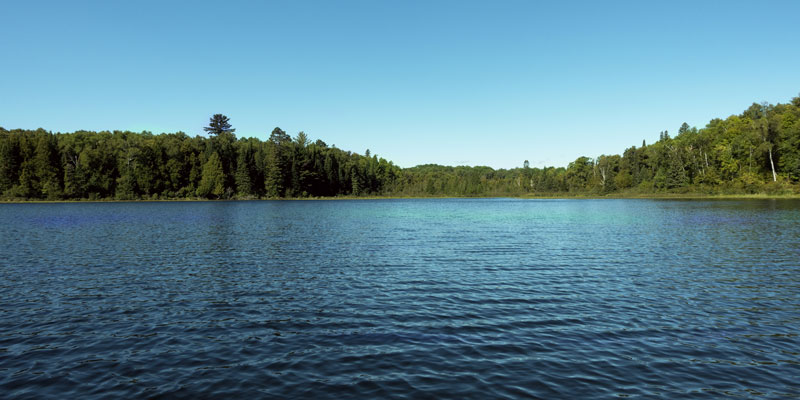Study finds freshwater lakes in North America become less “fresh” due to inputs of road salts.


With ice and snow comes salt. This expectation began when public works departments in the United States regularly starting using salt to de-ice roadways in the 1940s. Long after the final snow pile melts, road salt persists in aquatic ecosystems as chloride. At high levels, chloride negatively impacts drinking water sources and aquatic life.
Over the years a handful of studies characterized the short-term and local impacts of road salt on freshwater sources, but a recently published article in the Proceedings of the National Academy of Sciences marks the first to examine this phenomenon across a broad geographic region.
The study is the result of a collaboration between fifteen researchers in the Global Lake Ecological Observatory Network (GLEON) Fellowship Program, which trains graduate students to analyze complex and diverse environmental data sets collaboratively. Mindy Morales-Williams, a post-doc in the College of Biological Sciences and former GLEON fellow, is a co-author the study.
Because freshwater lakes directly influence environmental and human health, many are frequently monitored for a slew of potential contaminants leaving a data trail that researchers can pick up. Using data from a variety of sources, researchers compiled long-term chloride concentrations from 371 lakes across North America. Lakes used in the study had at least a decade worth of chloride data, a low chloride concentration (no brakish lakes), and a surface area greater than 4 hectares (about 2.5 acres). Given the high density of lakes in the North America lakes region, researchers focused on 284 lakes in this region, which includes New England states, New York, Ontario, Michigan, Wisconsin, and Minnesota.
Since road salt application data are inconsistently gathered across states, researchers searched for a proxy. By studying buffer zones around each lake and quantifying road density and percent impervious land cover (e.g. roadways, side, and parking lots), they used land cover metrics as a proxy for road salt usage.
When the buffer zone contained roads and other impervious surfaces, chloride levels increased over time in 70 percent of the lakes. If the trend persists, 14 lakes in the study will surpass chloride levels the Environmental Protection Agency deems necessary to support aquatic life in lakes (230 mg/L) by the year 2050.
With chloride level expected to persist and increase in the coming decades, the outlook is particularly poor for some Minnesota lakes. Morales-Williams notes the pronounced local impact: “Of the 14 lakes projected to reach EPA’s threshold for aquatic life by 2050, 13 are in Minnesota.”
Extrapolating these findings across the entire study region, models predict that around 7,770 lakes are at risk for increased chloride levels. “This is a striking example of the challenges we face in balancing population growth and urban sprawl with maintaining our freshwater resources for future generations,” says Morales-Williams. Minnesota and states across the North American lakes region will face finding this balance together. - Claire Wilson
RELATED: Study finds North American lakes at risk of rising salt levels (Minnesota Public Radio)